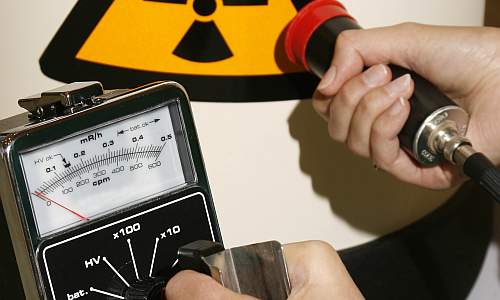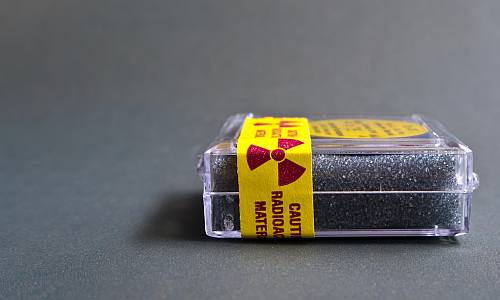Ionising radiation
The University Arrangements Chapter 4 ‘Radiation safety’ and Chapter 25 'Ionising Radiation Safety' set the requirements that must be followed in any work includes ionising radiation. These Chapters form the arrangements to implement the University health and safety policy and Organisation and must be followed.
Practical protection
Protection from radiation is achieved by shielding and distance. Certain materials will shield different types of radiation better than others. Perspex for alpha and beta particles, aluminium and lead for gamma and x-rays, water and wax for neutrons, although getting the shielding right is not straightforward for every situation. Distance can be used as a protection aid for the emitted radiation dose rate will diminish by one quarter for every metre from the source (the inverse square law). The quantity of radioactive materials (i.e. the activity) is important as this can minimise the dose rate and reducing the time spent in proximity to a source of radiation will also reduce the exposure.
Minimising risk in the workplace
The process by which the risk is reduced is prior risk assessment, where the emphasis is on prior. At the University many of the risks have been assessed by generic process, and the assessments are available on this site. You should read those that are relevant to your work and understand what they are about (and what is going on in your experiment). Thereafter follow the Local Rules and any associated Standard Operating Procedures (SOPs)...these have been developed from the findings of the assessments, and following them will ensure you work safely and within the statutory (legal) framework.
Environmental protection, the Environment Agency and the HSE
In addition to safeguarding all of our people the University has a strict duty to protect the environment and the public. The University operates under a series of permissions (permits) that are enforced by the Environment Agency. Failure to comply with permitted conditions can result in permits being unfavourably amended or at worse, withdrawn. Enforcements and Court prosecutions are not uncommon.
The University has put into place management systems, which if followed will ensure that people and the environment are protected and that we have good working relations with enforcement bodies. What you need to do is to understand (and observe) source accountancy procedures, maintain detailed records of your radioactive materials, and follow the correct procedures for the purchase, use and disposal of radioactivity.
The control of occupational exposure to radiation is subject to the Ionising Radiations Regulations 2017. The regulations and the associated HSE 'interpretations', the Approved Code of Conduct and Guidance, are available here.
Getting started: what to do?
Discuss your project and experiments with your academic supervisor.
Prepare a method statement and identify the radioisotope(s) and activities (quantities) you need to use to obtain a reliable result. Also estimate the partitioning of the radioisotope between the fractions incorporated into your sample and that which will become waste. Next, look at the chemistry of the reaction(s) and determine whether any radioactivity is likely to become volatilised or otherwise problematic to handle. For example, the stability of tritium, sulphur-35 and radioiodine chemistry can be pH dependent under certain circumstances and give off gaseous and therefore respirable forms.
Speak with your local Radiation Protection Supervisor (RPS) who will help you find a laboratory in which to carry out your experiments, guide you on work and safety requirements, and inform you of the handling procedures.
Now you know what you will be working with get training and make a permit application (see the training page to find out what to do about this).


